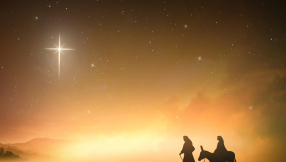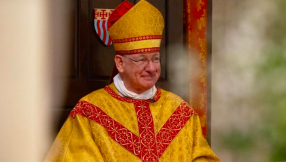
Nativity plays are now incredibly popular throughout the Christian world. Schools and churches put them on to varying degrees of success every year and many of us will remember holding our breath when finding out which part we'd been given.
Its origins, however, lie in the 13th century. Pope Francis' namesake, St Francis of Assisi, is believed to be the first to create a physical nativity scene in 1223 in an effort to engage ordinary, poor people with the Christmas story.
Until the nativity play was born, Christmas was primarily celebrated through church services held in Latin. Most ordinary lay people didn't understand the language, however, and so St Francis decided that a more accessible and interactive way of sharing the story of Jesus' birth was needed to share the good news.
According to the only account of the event, recorded by Franciscan monk St Bonaventure, Francis set up a scene in a cave just outside the town of Greccio, Italy. He used live animals, a wax figure to represent Jesus and a real man and woman dressed up as Mary and Joseph to create a visual image for his audience.
Francis brought the story to life through a dramatic retelling of the Bible story, and preached an impassioned sermon in which he reportedly couldn't utter the name Jesus, such was his emotion, and instead referred to him only as "the babe of Bethlehem".
In 'The Life of St Francis of Assisi', St Bonaventure writes: "The brethren were summoned, the people ran together, the forest resounded with their voices, and that venerable night was made glorious by many and brilliant lights and sonorous psalms of praise. The man of God [Francis] stood before the manger, full of devotion and piety, bathed in tears and radiant with joy."
St Bonaventure also reports that the hay used during the scene later cured the animals that ate it of all diseases and ailments, "God thus in all things glorifying his servant, and witnessing to the great efficacy of his holy prayers by manifest prodigies and miracles."
The response to that first nativity was incredible and its popularity soon spread. Other towns and villages across Europe began to hold their own, more characters were included such as the wise men, shepherds and angels and the nativity play as we know it today began to take shape (although probably with fewer tea towels).
Pope Honorius III gave his blessing and it eventually became a staple of Christmas celebrations. To this day, the nativity play continues to invite people in to hear of that amazing first night when God entered the world as a tiny baby and bought peace and justice to all.













